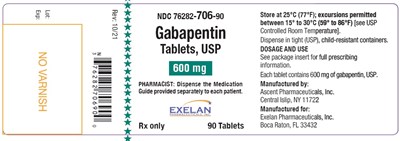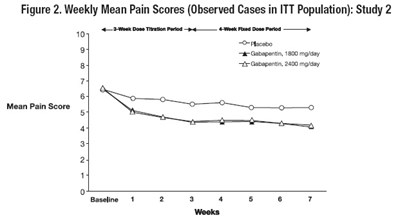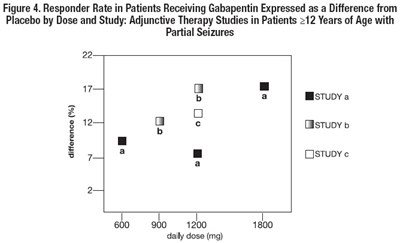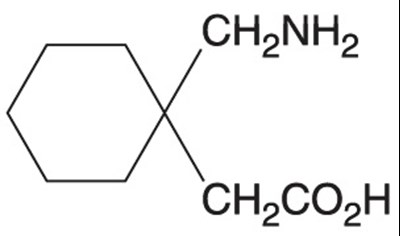Product Images Gabapentin
View Photos of Packaging, Labels & Appearance
Product Label Images
The following 17 images provide visual information about the product associated with Gabapentin NDC 76282-706 by Exelan Pharmaceuticals, Inc., such as packaging, labeling, and the appearance of the drug itself. This resource could be helpful for medical professionals, pharmacists, and patients seeking to verify medication information and ensure they have the correct product.
600 500 Tabs

This is a description of a medication called Gabapentin, which comes in tablets of 600 mg. The tablets are stored at a controlled room temperature range of 15°C to 30°C (59°F to 86°F). The medication guide is provided separately to each patient by the pharmacist. The manufacturer is Ascent Pharmaceuticals, and it is manufactured for Exelan Pharmaceuticals in Boca Raton, FL. The full prescribing information is available in the package insert.*
600 90 Tabs

This is a description of Gabapentin Tablets, USP manufactured by Ascent Pharmaceuticals, Inc. and distributed by Exelan Pharmaceuticals, Inc. It comes in a bottle with 90 tablets and the recommended storage temperature is at 25°C with excursions permissible between 15 to 30°C. Full prescribing information can be found in the package insert and a medication guide is provided separately for each patient. The tablets contain 600mg of gabapentin, USP and should be dispensed in tight, child-resistant containers.*
800 500 Tabs

Gabapentin Tablets, USP by Exelan Pharmaceuticals are indicated for the treatment of seizures and neuropathic pain. Each tablet contains 800 mg of gabapentin, USP. These tablets must be stored at 25°C (77°F) with excursions permitted between 15° to 30°C (59° to 86°F). The medication guide provided separately should be dispensed to each patient by the pharmacist. See the package insert for full prescribing information. Manufactured by Ascent Pharmaceuticals, Inc, and distributed by Exelan Pharmaceuticals, Inc, these tablets must be dispensed by a licensed healthcare professional.*
800 90 Tabs

Gabapentin Tablets, USP is a prescription medication manufactured by Ascent Pharmaceuticals, Inc for Exelan Pharmaceuticals, Inc. Each tablet contains 800mg of gabapentin, USP. It comes in a container of 90 tablets that should be stored at 25°C (77°F) with excursions permitted between 15° to 30°C (59° to 86°F) in tight, child-resistant containers. A medication guide should be provided separately to each patient. For full prescribing information, see the package insert.*
sideeffects - Sideeffects

This text suggests a list of symptoms that someone might experience due to a medical condition. These symptoms include difficulty speaking, tremors, swelling, tiredness, fever, coordination issues, double vision, and unusual eye movements. The cause of these symptoms may be due to a viral infection. Additionally, there may be jerky movements, drowsiness, nausea, and vomiting. Overall, these symptoms may suggest a neurological or viral condition that requires further medical attention.*
Table-1 - Table1

This is a table that shows the recommended daily dosage of gabapentin based on a patient's renal function, specifically their creatinine clearance. The table displays the daily dosage range for individuals with creatinine clearances ranging from 60 mL/min or greater to less than 15 mL/min. It also provides a supplemental post-hemodialysis dose for patients on hemodialysis. The dosage instructions are provided in TID, BID, and QD. For patients with a creatinine clearance less than 15 mL/min, the daily dose should be reduced proportionally.*
Table-2 - Table2

This appears to be a table showing risks associated with antiepileptic drugs in patients with epilepsy and psychiatric conditions. The table shows the number of events per 1,000 patients in both placebo and drug groups, as well as the relative risk and risk difference between the two groups. Without further context, it is unclear what the specific risks or drugs being evaluated are.*
Table-3 - Table3

This is a table presenting adverse reactions and percentage of patients affected in a postherpetic neuralgia study with Gabapentin and placebo. Adverse reactions are divided into different categories like Body as a Whole, Digestive System, Nervous System, Respiratory System, and Special Senses. Some of the adverse effects from Gabapentin include Asthenia, Diarrhea, Dizziness, and Blurred Vision. Weight gain, Hyperglycemia, and Otitis media are also included. The percentage of patients affected by each reaction is mentioned in the table.*
Table-4 - Table4

This is a list of adverse reactions in pooled placebo-controlled add-on trials in epilepsy patients above 12 years of age. The reactions were reported by patients who were administered Gabapentin® compared to patients who were given Placebo. The adverse reactions observed in patients who were administered Gabapentin® were Fatigue, Increased weight, Back Pain, Peripheral Edema, Vasodilation, Dyspepsia, Dry Mouth or Throat, Constipation, Dental Abnormalities, Somnolence, Dizziness, Ataxia, Nystagmus, Tremor, Dysarthria, Amnesia, Depression, Abnormal thinking, Abnormal coordination, Pharyngitis, Coughing, Abrasion, Impotence, Diplopia, and Amblyopia. It is noted that Amblyopia was often described as blurred vision. However, further details on the trials could not be obtained.*
Table-5 - Table5

This is a table presenting the adverse reactions in a placebo-controlled add-on trial in pediatric epilepsy patients aged 3 to 12 years. The table includes data on the drug Gabapentin and Placebo, with a sample size of 119 and 128 respectively. The adverse reactions listed in the table include nausea and/or vomiting, emotional lability, respiratory infection, and the text appears to end with a reference to a drug used for epilepsy called Phos b rooml mtepilepii drag ey.*
Table-6 - Table6

This is a table presenting data on controlled PHN (post-herpetic neuralgia) studies conducted using Gabapentin. The table shows the duration of the studies, dosages used, and the number of patients receiving Gabapentin and Placebo. There were two studies conducted, with a total of 336 patients receiving Gabapentin and 221 receiving Placebo. The second study involved Gabapentin being given in three divided doses throughout the day.*
clcr - clcr

This text appears to be a medical equation or formula. It involves calculating the optimal dosage of a medication based on a patient's age, weight, and serum creatinine level. The formula utilizes a coefficient of 0.65 for female patients. Without additional context or information, it is difficult to provide further analysis or interpretation of this formula.*
Figure-1 - figure1

This is a figure showing the weekly mean pain scores observed in an ITT population in Study 1. The baseline pain score is represented as 0 and the scores for weeks 1-8 are shown on the graph. The study evaluated the effectiveness of a treatment involving Gabapentin.*
Figure-3 - figure3

The text is showing a figure with a graph and some percentages related to Controlled PHN Studies. Therefore, it is not providing any useful description.*
* The product label images have been analyzed using a combination of traditional computing and machine learning techniques. It should be noted that the descriptions provided may not be entirely accurate as they are experimental in nature. Use the information in this page at your own discretion and risk.


